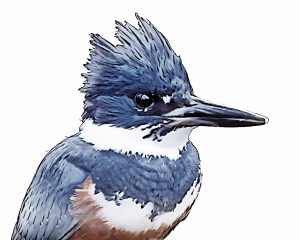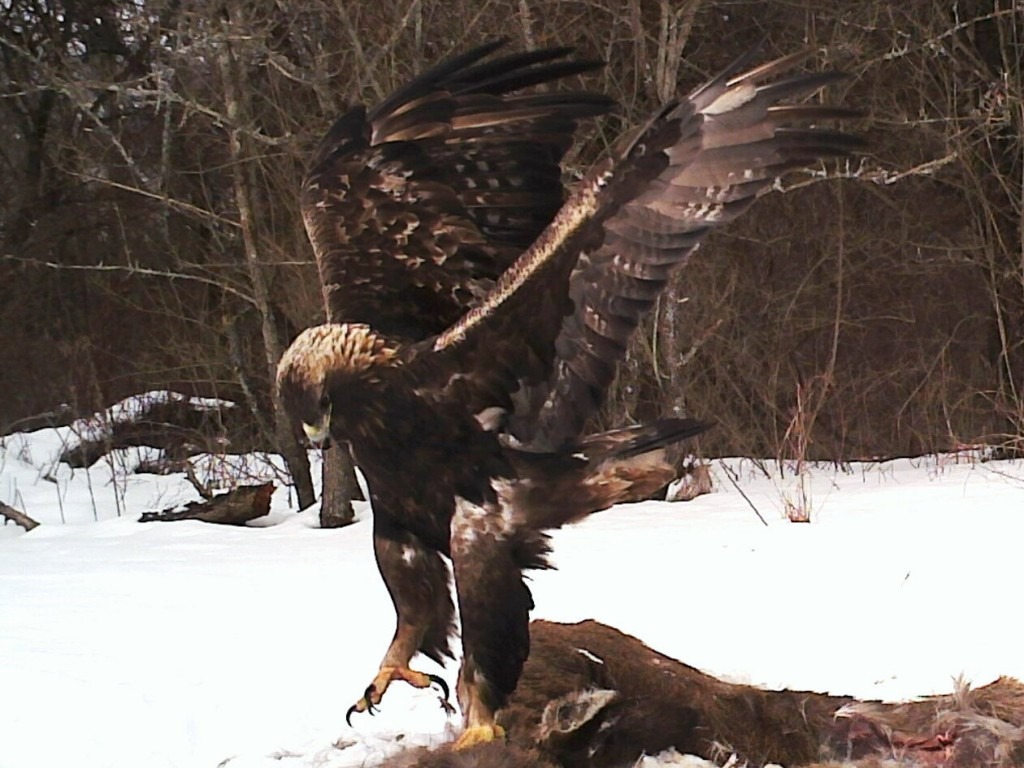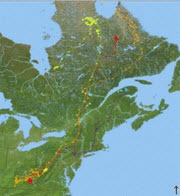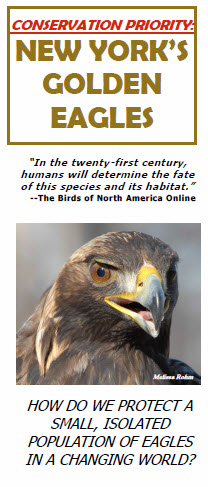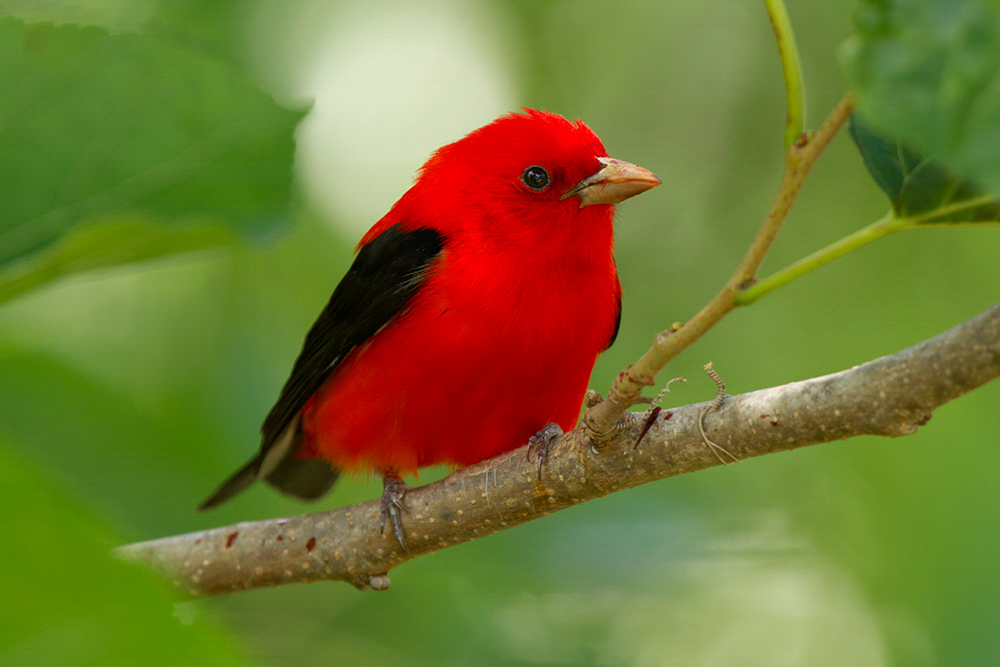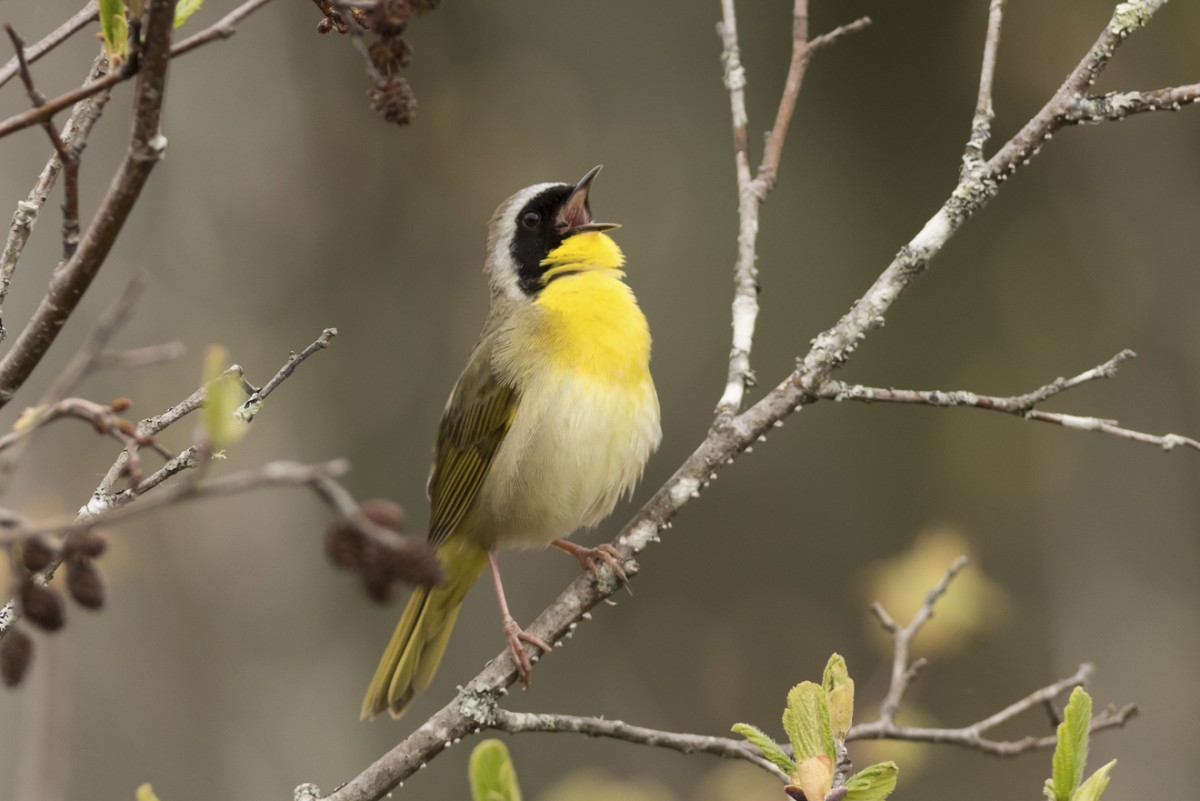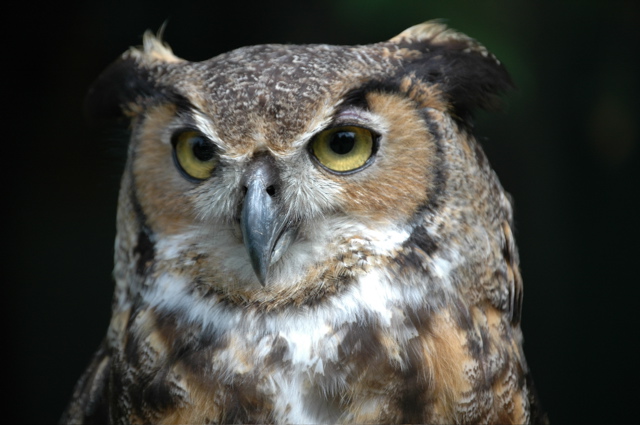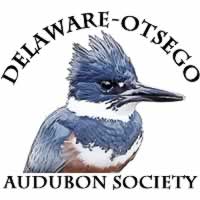This is archived information – for historic documentation.
Golden Eagle Project Telemetry Work – Winter 2014
Golden Eagle Research
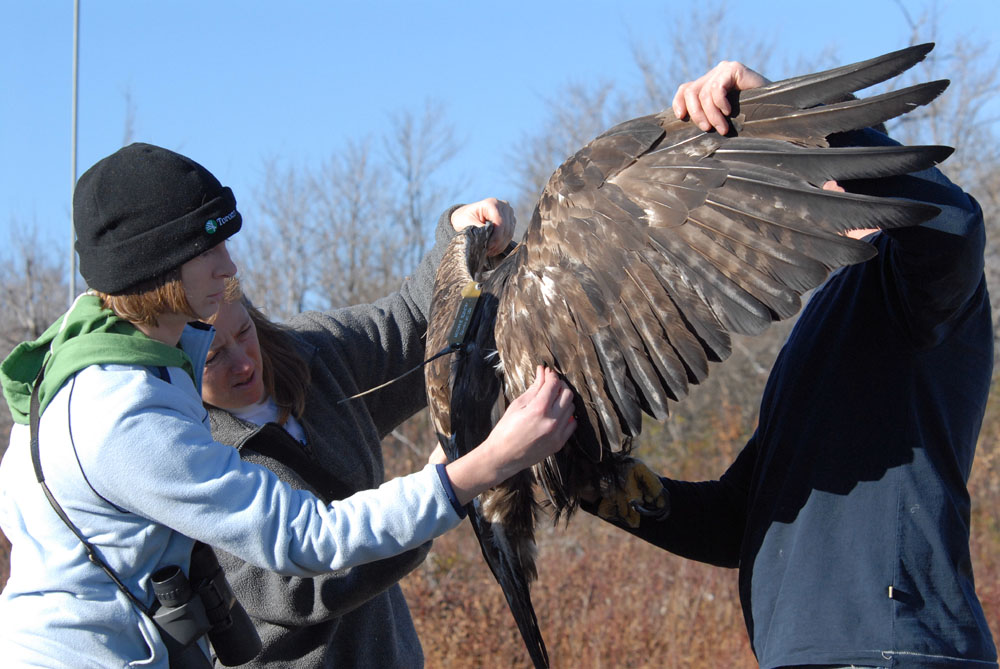
The Franklin Mountain Hawk Watch has become “the” place to see goldens in New York. If you’ve visited the watch on a good day, you’ve seen goldens flying 200 feet off the ground, using the updraft from the ridge to glide its length. This migratory behavior, where birds concentrate along ridges, is typical of Golden Eagles. Unfortunately, it puts the birds in the very same space that developers target for siting their wind power projects. The DOAS Board understands the threats posed by the burning of fossil fuels. We support properly sited wind projects. However, we have grown concerned about impacts to birds and bats. As many as 60,000 wind turbines will be required too reach national energy goals. Many will be built along the ridges of New York and Pennsylvania. Some of those ridges will attract raptors like Franklin Mountain. (Photo at left by Melissa Rohm.)
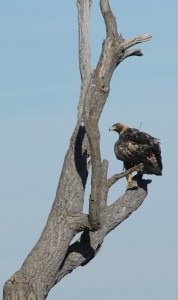
As a species, Golden Eagle is especially vulnerable to wind turbines. It has been called the species which “appears to be at the highest risk”. Knowing that more eastern goldens pass our site than anywhere else this far north, we feel a special responsibility to protect “our” birds. This isn’t easy since away from our site almost nothing is known about how and where they migrate and forage in New York. To learn more about this NYS Endangered Species so they can be protected, we have joined with scientists studying Golden Eagles in the central Appalachians to expand their ongoing studies of winter ranges and migration routes into New York.
Using a wealth of data on the locations and movements of Golden Eagles that were trapped and fitted with transmitters, and the help of Golden Eagle researchers Todd Katzner and Trish Miller, we identified areas in New York to target for this research. (Note: DOAS supporters contributed to the cost of a GPS transmitter for this research.)
We began successfully collecting spring migration data in southern Delaware County in early March 2009. During spring 2010, counting was done on three ridges in eastern Otsego County. See reports on these efforts below. The 54 Golden Eagles counted at Betty and Wilbur Davis State Park in 2010 were promising. We counted at the site again in March 2011 and 2012. However, Golden Eagle numbers were considerably lower in 2011 and 2012. All data gathered from these NY State surveys is available for use by other researchers. This information will help identify where eagles concentrate so potential development of these areas can be addressed. These data can be found at www.hawkcount.org. The spring season site names are all prefaced with DOAS.
Wintering Eagles in New York
Since early in 2010 we used baited wildlife cameras to locate winter resident Golden Eagles as part of the Appalachian Eagles Project (http://www.appalachianeagles.
The motion-activated digital cameras, also known as game or trail cameras, were stationed at high elevations in Chenango, Delaware and Otsego Counties. Road-killed deer and some domestic animal carcasses were used as bait. Animals that had been euthanized were not used if there were any concerns about lead poisoning of the scavengers. Since 2012, we have facilitated the expansion of this project into other areas of the state. If you are interested in participating in this project, see the contact information below. We express our appreciation to all who have helped with this effort to protect Golden Eagles. If you would like to support this research, donations are always welcome to broaden the scope of these studies in New York State.
See some representative photos.
Last updated May 7, 2013
Want to Know More?
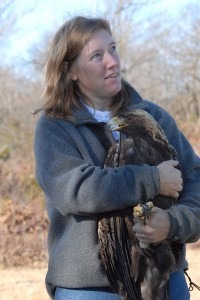
Our collaborators at West Virginia University are now tracking several Golden and Bald Eagles with telemetry units.
Katzner Lab – Golden Eagle Movements in Eastern North America
Download one of our research reports:

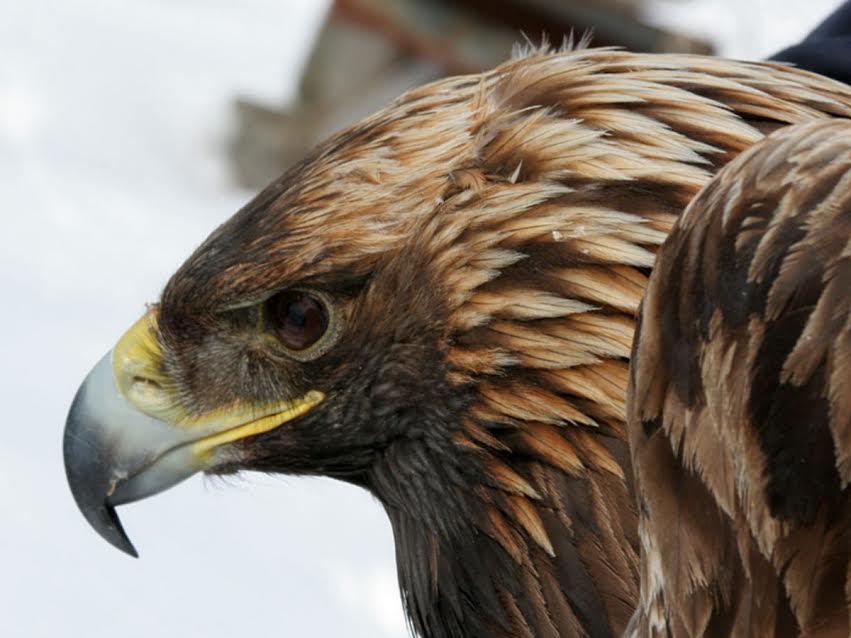
Spring 2010 Eagle Survey in Otsego County.
Spring 2009 Eagle Survey in Delaware County.
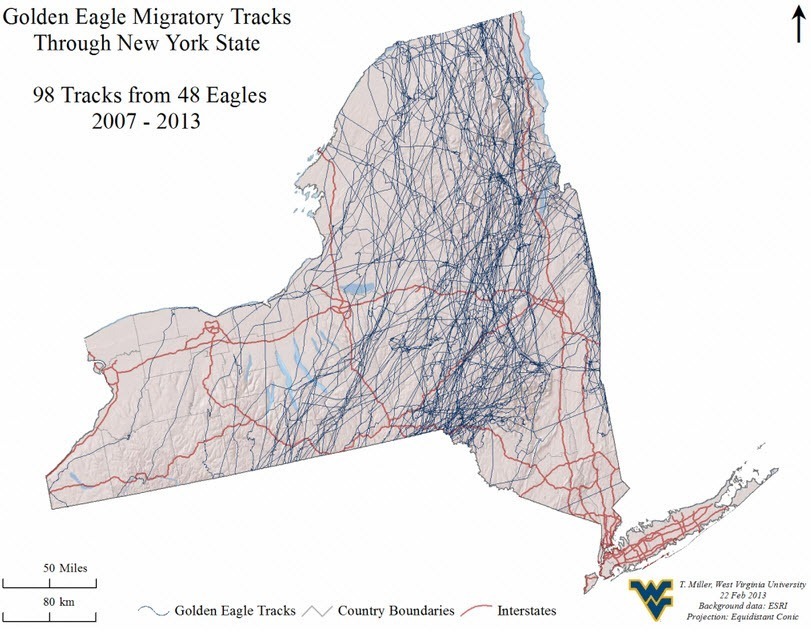
Want to help?
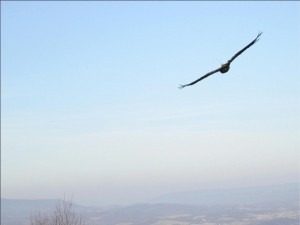
Learn the field marks for telling Golden Eagles from Bald Eagles.
Contact Tom Salo, (607) 965-8232, to volunteer to help record Golden Eagle data, or with any questions.
March 2014 Tracking Data:
IN 2014 WE BEGAN TRAPPING AND TRACKING WINTER RESIDENT EAGLES
The Golden Eagle Tracking Project will provide accurate data regarding winter habitat and migratory routes used by this rare NYS Endangered Species. These data will be used for proper siting of wind energy infrastructure, and will raise awareness about our region’s importance as winter habitat and a migratory concentration area. Collecting GPS data every 15 minutes allows us to identify important habitats used by eastern golden eagles.
The need for more and better data became apparent in the early spring of 2013 when an application to build a commercial wind project was proposed within the Cannonsville/Steam Mill Important Bird Area near Walton. The developer submitted a flawed avian impact assessment. Because we knew the area to be important during migration, DOAS took immediate action. The proposal was subsequently retracted. Additional information about this can be found on the DOAS website (search “walton wind”).
Because of this incident, the board decided to initiate a trapping and tracking program in New York. (This has been done with birds that winter further south). DOAS members, supporters and the Norcross Wildlife Foundation agree to fund the purchase of 4 telemetry units.
The project launched in the winter of 2014 with the successful telemetering of three out of the targeted four golden eagles. One bird stopped transmitting locations after 10 days. The unit was transmitting but apparently could not acquire 3 satellites for a GPS location. Crews of volunteers searched the last know location in Delaware County. The bird was not found. However, a short distance from the last reported location, searchers discovered multiple wild boar carcasses that had been killed with lead ammunition. It came to our attention later that a sick Bald Eagle had been found weeks earlier a mile and a quarter from the disposal site. It died shortly thereafter from extremely high levels of lead in its system. Although the evidence is circumstantial, we believe the telemetered bird fed on carcass remains at this site and became weakened and subsequently died as a result of lead poisoning. Immediate steps were taken to assure that government agencies involved in wildlife control properly dispose of carcasses to prevent scavenging species from feeding on the remains.
Because of this outcome, it was determined that inclusion and promotion of the use of non-lead ammunition should be an important part of our outreach efforts. In 2016, we produced a 13 minute informational video on the dangers of lead ammunition. View the video here.
2015 efforts to trap and telemeter more eagles were delayed by manufacturing problems and extreme cold weather.
